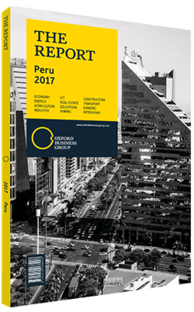Fernando Castillo, General Manager, ICCGSA: Interview

Interview: Fernando Castillo
What are the opportunities for private sector involvement in smaller-scale projects?
FERNANDO CASTILLO: There are not too many large projects currently under development, so the key is to participate in smaller projects, especially if they are mining, education, health and infrastructure related. Given the small number of projects, competition has increased, with a number of big players trying to maintain their share in a market that has been shrinking over the last few years. It has become critical for investors to change their strategy and focus on projects that would traditionally be disregarded. Opportunities exist during times of uncertainty. The private sector is turning its focus to the changes implemented in the Public Works for Taxes scheme, which increases the number of sectors in which it is applicable, including rural electrification, fisheries, urban housing, social protection, social development, transport, communications and justice. These changes constitute new windows of opportunity for construction and infrastructure companies and are key to bridging the country’s infrastructure gap, given that the state’s resources, capabilities and know-how are limited without private sector participation. The state’s biggest challenge is fulfilling its role of serving the people. The Public Works for Taxes programme is the ideal alternative because it allows the government to fulfil its duties by guaranteeing that taxes are spent on the country’s developmental needs.
How necessary is water treatment infrastructure for the country’s sustainable development?
CASTILLO: Access to water is a fundamental right of every Peruvian. President Pablo Kuczynski and his administration have shown the commitment to overcome challenges to access. With the development of water infrastructure comes improved public health. One must understand that in developing water infrastructure, the government can save millions of dollars that would be spent on treating diseases associated to limited access to water and deficient sewage and water treatment systems. The private sector has the technical expertise to work with the government in order to minimise the number of Peruvians lacking access to water. The new system replacing the National System for Public Investments (SNIP) will enable water treatment infrastructure projects. The specifics of the new system are yet to be announced, however, the current administration and the private sector at least agree on the idea that the SNIP is an outdated system, as it was created to manage Peru’s resources at a time of scarcity It then became a way of financing public works carried out by municipalities and regions without following a technical or social criteria. For instance, under the SNIP some political leaders built football stadiums, while ignoring the population’s water infrastructure needs. This was possible because the system would prevent the construction of works that were not profitable, for example, water infrastructure in underprivileged areas. Unfortunately, the SNIP allowed extreme absurdities. Water and education were mainly affected by this system. The new system must not prioritise profitability over social needs.
What type of synergies should the private and public sector seek to achieve?
CASTILLO: There are numerous challenges to bridging the country’s infrastructure gap. The only way of fixing it is by further enhancing public-private partnerships. There is a need to establish long-lasting work groups that include representatives from the public and private sectors. These groups must be maintained despite the ongoing changes in government, and must strive to enhance efficiency in decision making in order to respond to the infrastructure needs in a timely and efficient manner. The private sector is equipped with the expertise and technical knowledge to bridge the infrastructure gap, while the public sector has the power to shape a private sector-friendly framework.
You have reached the limit of premium articles you can view for free.
Choose from the options below to purchase print or digital editions of our Reports. You can also purchase a website subscription giving you unlimited access to all of our Reports online for 12 months.
If you have already purchased this Report or have a website subscription, please login to continue.

